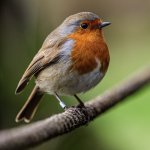- Messages
- 251
- Name
- Andrew
- Edit My Images
- Yes
Hi all, I am still trying to learn, but it takes a while for stuff to sink in with me lol, I just looked at the Exif data for an image I took today and am a bit bewildered, the image was of a Robin on our garden fence taken through a window (posted in pictures you took today). My question is why did the camera pick such a high ISO ?, the image was taken using aperture priority and a Panasonic 45-150 f4-5.6 lens. the data says the following.
Panasonic G5, 150mm, f5.6, 1/320 sec, ISO 1250??, the picture was taken at 4.24pm so still very light outside, I have the ISO set to auto if that makes a difference.
thanks Andy
Panasonic G5, 150mm, f5.6, 1/320 sec, ISO 1250??, the picture was taken at 4.24pm so still very light outside, I have the ISO set to auto if that makes a difference.
thanks Andy



